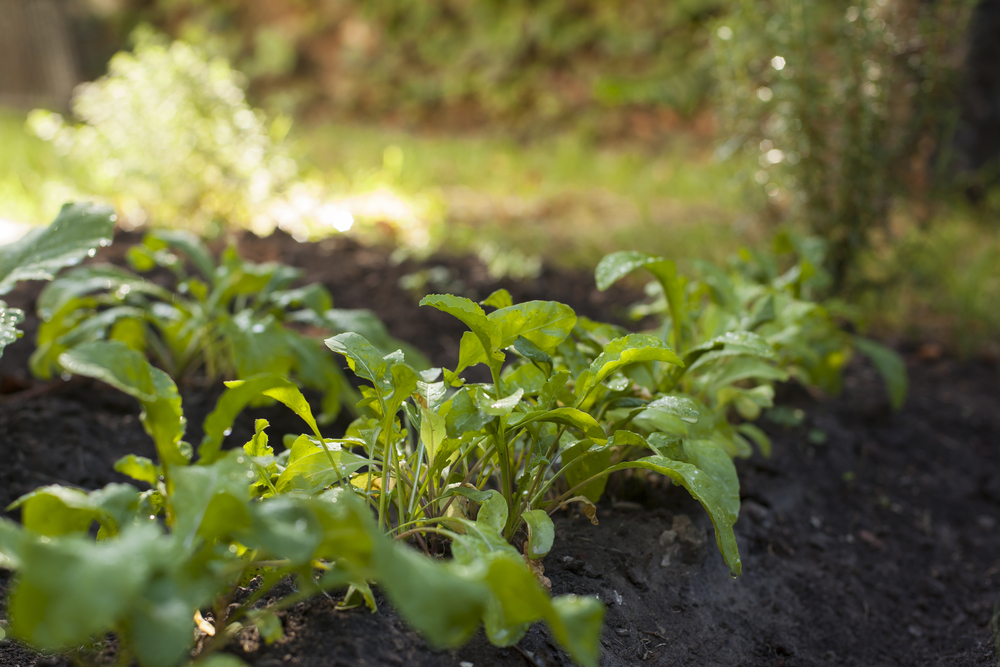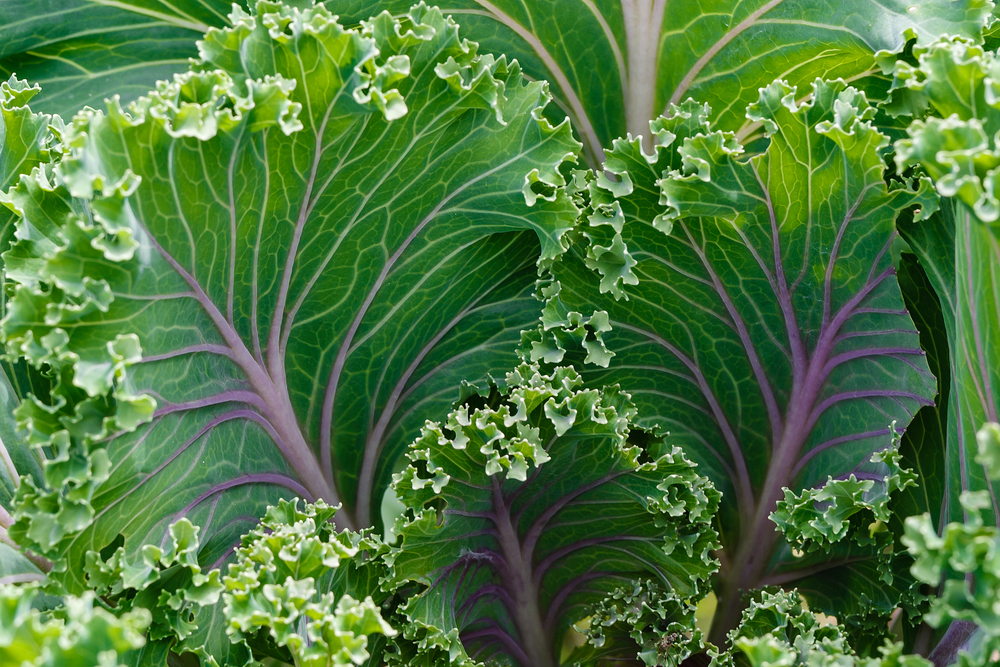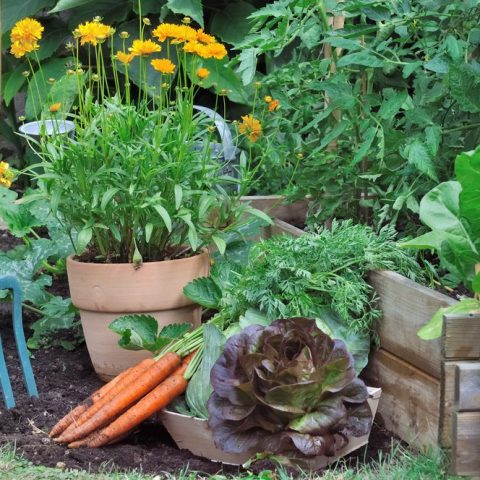Shade Loving Vegetables
If you’re wondering which vegetables grow in the shade, you’re not alone. Many people live in homes in established neighborhoods with huge mature trees casting long shadows across the yard and only fleeting blips of dappled sunlight, causing many a tomato plant to struggle for enough light for bearing fruit.
We live in the woods so definitely struggle for enough direct sunlight for summer gardens. Each year our tomatoes struggle because they don’t have enough all-day light, until last year when we finally cut down a couple trees and turned them into firewood.
We love our home in the woods, but all the wonderful trees that keep us cool and cut our cooling bill in summer, also keep us from growing some things. The trees also create the perfect jungle gym café for the squirrel to partake of our garden fare.
So it’s great to discover which vegetables can be grown in the shadier spots. It’s also helpful to discover that some plants do relatively well in both. In that case we’ll place them in more than one list. But first, let’s define the types of shade.
Types of Shade
There are a handful of types of shade, from deeply shaded to full sun and gradations in between. However, for simplicity, most plants can be roughly categorized as “full shade”, “partial shade” and “full sun”.
Keep in mind that plants that can handle partial shade, may also be able to handle full shade. Similarly plants that can handle full sun, may also do just fine in partial shady garden. For those plants we will place them in more than one list.
Shade Loving Vegetables – 1-3 hours of Direct Sunlight
Ramps! The ramp vegetable is the only vegetable we know of that not only thrives in low light, but requires it to flower and mature. That said, ramps would not grow well in a deeply dark pine forest. Rather, they thrive in moist deciduous woodlands where they awaken in spring in the dappled light of leafless hardwoods.
See what are ramp vegetables? here.
Shaded gardens that work are typically wooded or mature yards with a canopy of trees. These yards may receive dappled sunlight and the brightness of indirect light with 1-3 hours of sun, and shaded or indirect light most of the time.
Partial Shade Vegetables 3-6 Hours of Direct Sunlight
Partial shade is those partly sunny yards with multiple mature trees. These trees cast shadows approximately 50% of the day, and can get between three to six hours of sun.
For growing in partial shade, container gardening can be helpful. You can grow plants in pots on castors and dollies to make it easier to move plants to chase the sun, or to rotate them, such as may be needed for tower gardens.
Full Sun Vegetables
As the title describes, full sun is for plants that can take direct sun exposure all day long. This is especially applicable for hearty vegetables and fruits. These include crops such as legumes, gourds pumpkins, squash, tomatoes, peppers and all fruit and nut trees, except maybe paw paw fruit, which can get by with partial sun.
Remember, some plants can grow relatively well in more than one category. In particular, partial shade plants can grow in shaded areas if there is a lot of ambient, indirect or reflective light.
Which Vegetables Grow in the Shade and Partial Shade?
What follows is a comprehensive list of shade tolerant vegetables and herbs in alphabetical order. After that we’ve broken it into shorter lists of shade and partial shade plants, as well as type. However, these shade friendly plants still need reflective or indirect light and will not thrive in dark shade.
Comprehensive List of Shade Tolerant Vegetables, Herbs, and Edible Weeds
- Angelica
- Arugula
- Asparagus
- Basil
- Beets
- Bok choy / Chinese cabbage
- Broccoli
- Brussel Sprouts
- Bush beans
- Bush tomatoes
- Cabbage
- Carrots
- Catnip
- Cauliflower
- Celery
- Chervil
- Chickweed
- Chives
- Collards
- Corsican Mint
- Corn Salad
- Costmary
- Dandelion
- Endive
- Garden cress
- Garlic
- Henbit
- Horseradish
- Hostas (yes, they’re edible)!
- Japanese parsley
- Kale
- Kohlrabi
- Leaf Lettuce
- Leeks
- Lemon balm
- Lettuce
- Longevity Spinach
- Lovage
- Marsh Mallow
- Mint
- Mizuna
- Mustard Greens
- Parsley
- Parsnip
- Peas
- Plantain
- Potatoes
- Radish
- Ramps
- Rhubarb
- Rosemary
- Rutabaga
- Scallions
- Sorrel
- Spinach
- Summer Squash
- Sweet Cicely
- Sweet woodruff
- Swiss Chard
- Tatsoi
- Tree Collards
- Turnip
- Valerian
- Watercress
- Wild bergamot
- Wild ginger, (Asarum canadense)
- Yellow Squash
- Zucchini
Vegetables That Grow in the Partial Shade – 4-6 Hours of Sunlight
Leafy Vegetables that Grow in Partial Shade
- Arugula
- Bok choy
- Chard
- Chickweed
- Corn Salad
- Dandelion
- Endive
- Hostas
- Kale
- Kohlrabi
- Leaf Lettuce
- Longevity Spinach / Gynura procumbens
- Mustard Greens
- Radish – (radish greens are a edible vegetable leaves)
- Spinach
- Swiss Chard
- Tree Collards
- Watercress
Root Vegetables that Grow in the Partial Shade
Brassica Vegetables That Grow in Partial Shade
- Broccoli
- Brussel Sprouts
- Cabbage
- Cauliflower
- Collards
- Kale
- Kohlrabi
- Tree Collards
These Brassicas can also grow in full sun, if temps aren’t too hot. Remember to eat the leaves as well. They’re great shredded or chopped into salads as well as steamed. Harvest the larger leaves from the lower section of the plant and leave ample newer leaves to nurture the plant, and you can harvest the Brassica greens throughout the life of these cruciferous plants.
Shade Loving Herbs
- Angelica
- Basil
- Catnip
- Celery
- Chervil
- Chickweed
- Chives
- Corsican Mint
- Costmary
- Dandelion
- Garden cress
- Garlic
- Henbit
- Horseradish
- Japanese parsley
- Lemon balm
- Lovage
- Marsh Mallow
- Mint
- Parsley
- Plantain
- Rosemary
- Scallions
- Sorrel
- Sweet Cicely
- Sweet woodruff
- Valerian
- Watercress
- Wild bergamot
- Wild ginger, (Asarum canadense)
You can also grow ginger in pots indoors in partial sun. See more on that in this article on White Butterfly Ginger Plant.
Shade Loving Vegetables – Images and Information
Arugula
Being leafy, arugula would be expected to a sun-lover, but sunlight often droops and shrivels the leaves, so this is a good “under” leafy vegetable to plant under other, larger ones.

Endive
Endive is likely the most shade-loving of all the leafy lettuce-type plants.

Kale
Isn’t it beautiful?! Like its cabbage cousins, kale loves cold weather and less light. We favor perennial vegetables like the walking stick kale. Other varieties of kale are biennial, growing on for two years of harvests if over-wintered in zones 7 and higher (warmer), or if covered and mulched in colder zones.

Leaf lettuce
Most lettuce plants prefer less sun. Our favorite is an herb spring mix, so we really enjoy the mixed lettuce seed packs.

Mustard greens
A popular plant in the U.S., mustard greens are often grown in flower gardens and near porches where sunlight is limited.

Spinach
Like lettuce, spinach needs cooler temperatures and less sun.

Swiss chard
Another sturdier leafy plant, Swiss chard, is happy without a lot of sunlight. Swiss chard is stouter than most lettuces, but it will wimp out in the heat.

A plant we’ve added to our ornamental edible landscaping is hostas. Yep… hostas are edible, as well as beautiful!
What vegetables are you growing in the shade? Please visit the Gardens All Facebook page and let us know.
We are an online gardening publication sharing all things garden related! Including urban farming, family gardening, homesteading, gardening for profits, and more. We’re all about growth!

